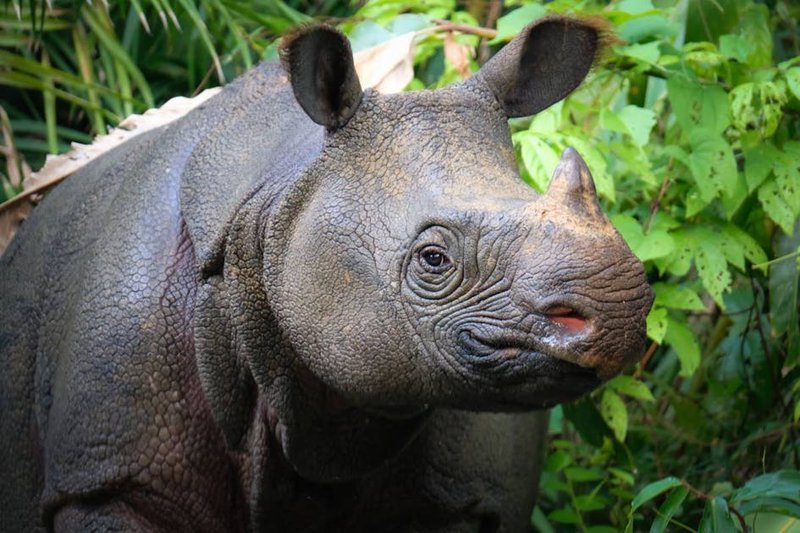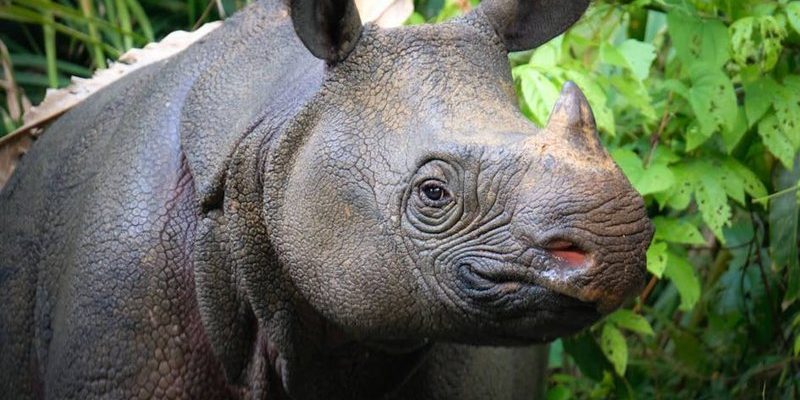
But what should you do if you actually find yourself face-to-face with one? Here’s the deal: it’s not just about keeping your cool. Knowing how to handle this situation can make a world of difference for both you and the rhino. So, let’s break it down into manageable steps—like planning a small adventure. From understanding these magnificent creatures to knowing the dos and don’ts of an encounter, we’ll cover it all.
Understanding the Javan Rhinoceros
Before you even think about what to do in an encounter, it’s crucial to understand what you’re dealing with. The Javan rhinoceros is a rare species, with only a few dozen left in the wild, primarily living in Ujung Kulon National Park in Indonesia. They’re not just any rhinoceros; they’re unique in many ways. They have a single horn, unlike the more common two-horned species, and their skin is folded, giving them that tough, armored appearance.
Javan rhinos are elusive and tend to keep to themselves. They’re not aggressive by nature, but they can react if they feel threatened. Imagine a big cat that prefers to hide rather than fight. This is basically the Javan rhinoceros. They mostly graze on grasses, leaves, and twigs, making them an essential part of their ecosystem. Understanding their habits and lifestyle can help you appreciate them even more.
Another interesting fact? They play a huge role in their habitat. By eating and moving through the forest, they help maintain the health of the vegetation. It’s like they’re nature’s gardeners! So, if you’re lucky enough to see one, remember that you’re witnessing a crucial part of the ecosystem.
Stay Calm and Assess the Situation
Now that you know what a Javan rhinoceros is all about, let’s talk about your first response if you encounter one. Staying calm is crucial. Move slowly and quietly, like a deer caught in the headlights—but without the panic! Take a moment to assess the situation. Is the rhino aware of your presence? Is it grazing peacefully, or does it seem agitated?
Honestly, if the rhino seems calm, that’s good news. You can quietly watch from a safe distance. But if it looks uncomfortable or starts moving toward you, that’s a clear sign that it feels threatened. In situations like this, here’s the thing: your safety comes first. Assess how to back away slowly and quietly without making sudden movements.
This is not the time to take selfies or try to get closer for the perfect shot. Respecting their space is essential. Remember, these creatures are wild, and safety for both you and the rhino is top priority.
Creating Distance: The Right Way to Move
If you find yourself too close for comfort, you need to know how to make a graceful exit. The best approach is to back away slowly. Sudden movements can startle the rhino, causing it to charge.
Here’s how to do it:
- Keep your eyes on the rhino as you move, but avoid direct eye contact, which can be perceived as a threat.
- Take slow, deliberate steps backward. No running! Think of it like a slow dance back to safety.
- Maintain a calm and steady voice if you’re with others, reassuring them to stay quiet and composed.
If the rhino starts moving toward you, don’t panic! Keep backing away, maintaining your composure. Getting loud or waving your arms could escalate the situation. Picture yourself trying to soothe a large, nervous animal instead of provoking it.
Understanding Rhinos’ Behavior
Another crucial point is understanding some typical behaviors of a Javan rhinoceros. They have body language that can tell you a lot about what they’re feeling. For example, if a rhino raises its head or snorts, it might be feeling threatened.
You might wonder why it matters. Well, if you can read their body language, you can better gauge how to react. When a rhino is relaxed, it may graze or walk slowly. If it starts stomping or shaking its head, that’s a sign to back off.
Here’s something to keep in mind: being aware of your surroundings can make a huge difference in your experience. Keep an eye out for other wildlife too! If they’re on alert, that might suggest something is amiss, and you should proceed with caution.
What Not to Do When Encountering a Javan Rhinoceros
Let’s be clear—there are definitely some actions you want to avoid when you find yourself in the presence of a Javan rhinoceros.
First off, don’t attempt to feed or approach the rhino. Seriously, this isn’t a petting zoo! Even if they look friendly, they can become defensive. Also, never corner a rhino. If they feel trapped, they might react aggressively.
Other don’ts include:
- Don’t make loud noises or sudden movements.
- Don’t try to take selfies or photographs up close.
- Don’t ignore signs of distress from the rhino.
Being respectful of their space isn’t just polite—it’s essential for your safety. Remember that you’re in their home, and you need to treat it as sacred.
Reporting Your Encounter
If you’ve had this once-in-a-lifetime experience, it’s important to report your encounter. Wildlife officials can use your sighting to help monitor the population and ensure conservation efforts are in place.
You might be wondering how to go about this. Most wildlife parks have a visitor center or ranger station where you can share your sighting. Be ready to provide details like:
- Time and date of the sighting
- Location and any notable behaviors
- Descriptions of the rhino, if possible
Sharing your experience not only contributes to conservation efforts but also helps others who may have similar encounters in the future. Plus, you get to share your adventure story, which is always a bonus!
Respecting Wildlife and Conservation Efforts
Understanding what to do if you encounter a Javan rhinoceros is part of a larger picture: respecting wildlife and supporting conservation efforts. These magnificent creatures are threatened by habitat loss and poaching. Every time you learn about or share information on them, you spread awareness.
Promotion of conservation drives helps people understand the importance of protecting these animals and their habitats. If you’re passionate about their survival, consider supporting local conservation organizations or sustainable tourism initiatives. Even small actions can lead to significant changes.
Here’s a thought: by simply being informed and ready to act responsibly in the wild, you can help ensure that these incredible rhinos stick around for future generations.
Final Thoughts
Encountering a Javan rhinoceros in the wild can be both thrilling and daunting. By staying calm, respecting their space, and understanding their behavior, you can not only keep yourself safe but also appreciate the wonder of nature. Every encounter is a reminder of how fragile our ecosystems are and the importance of conservation.
So if you ever find yourself in the wild and come across one of these majestic creatures, remember this guide. You won’t just be a lucky observer—you’ll also be a responsible steward of nature, helping to protect wildlife for years to come.

